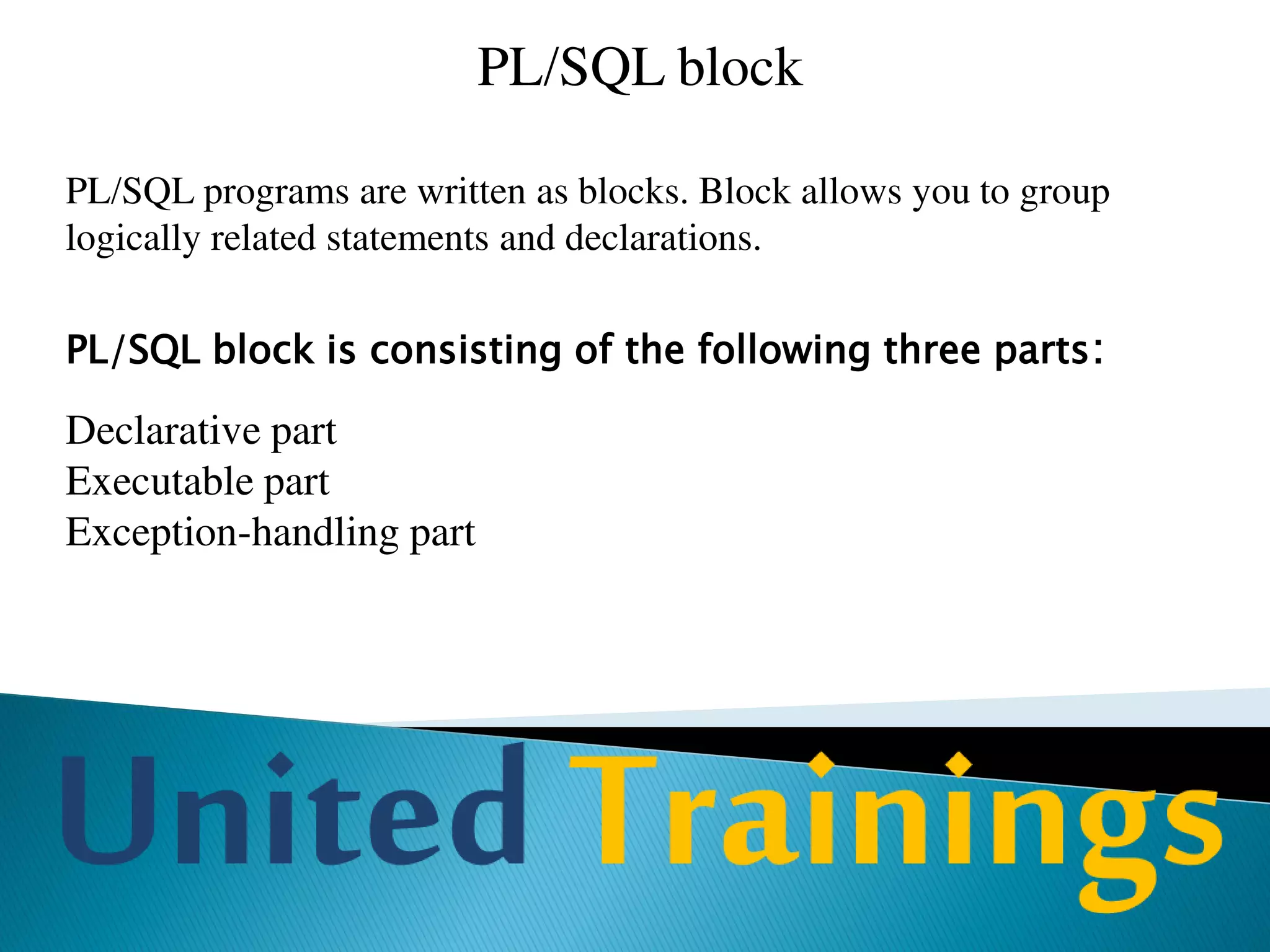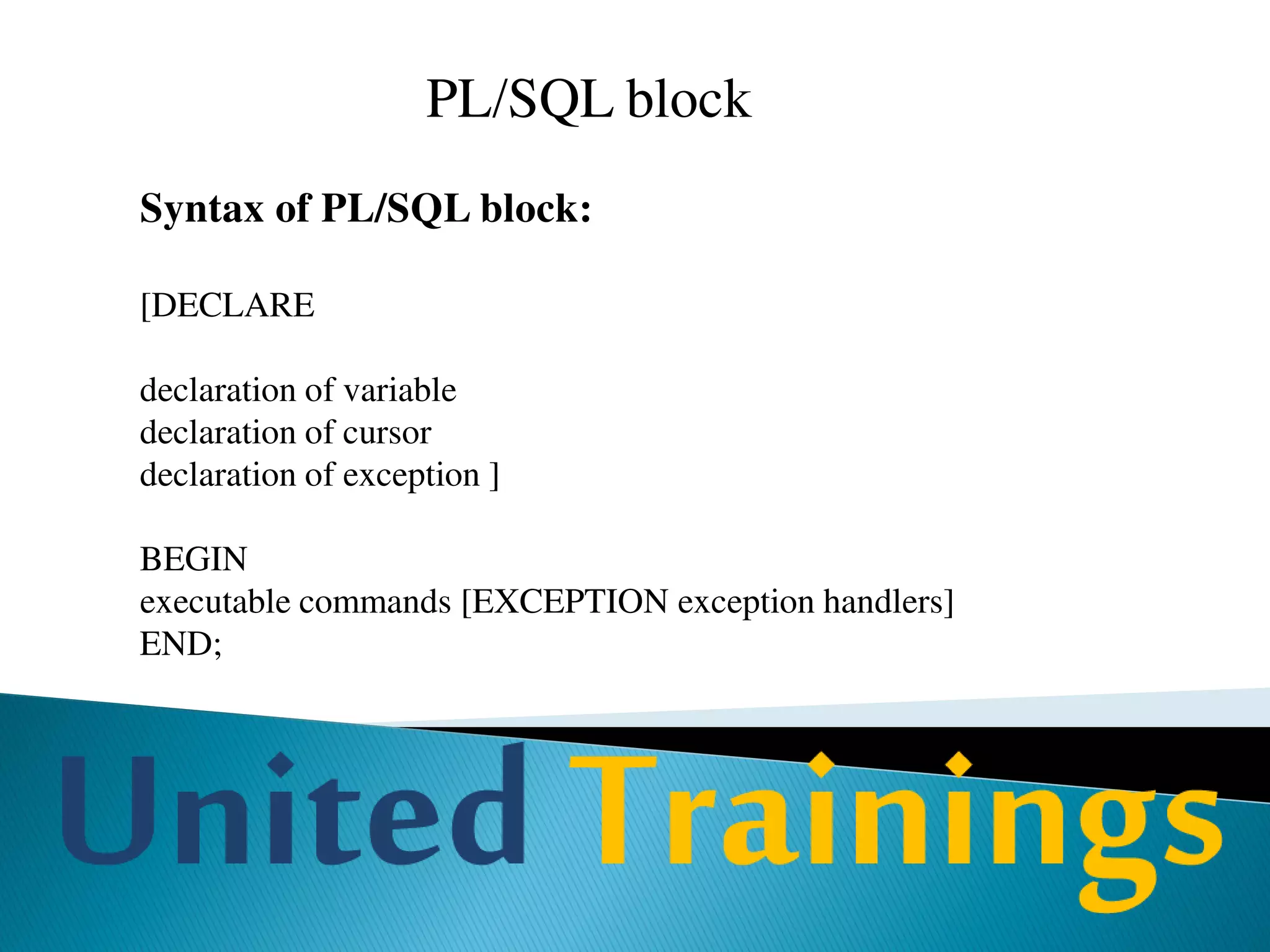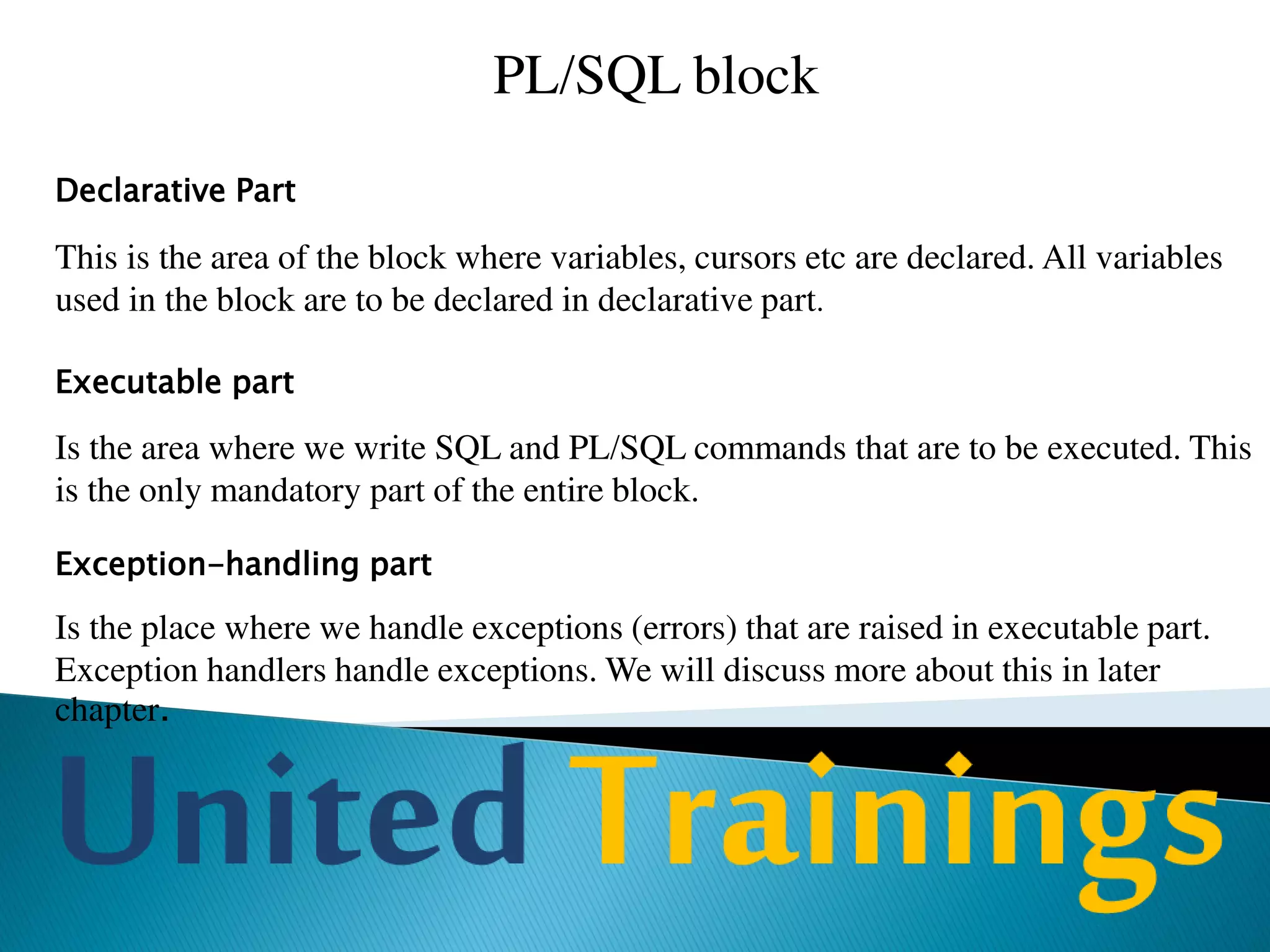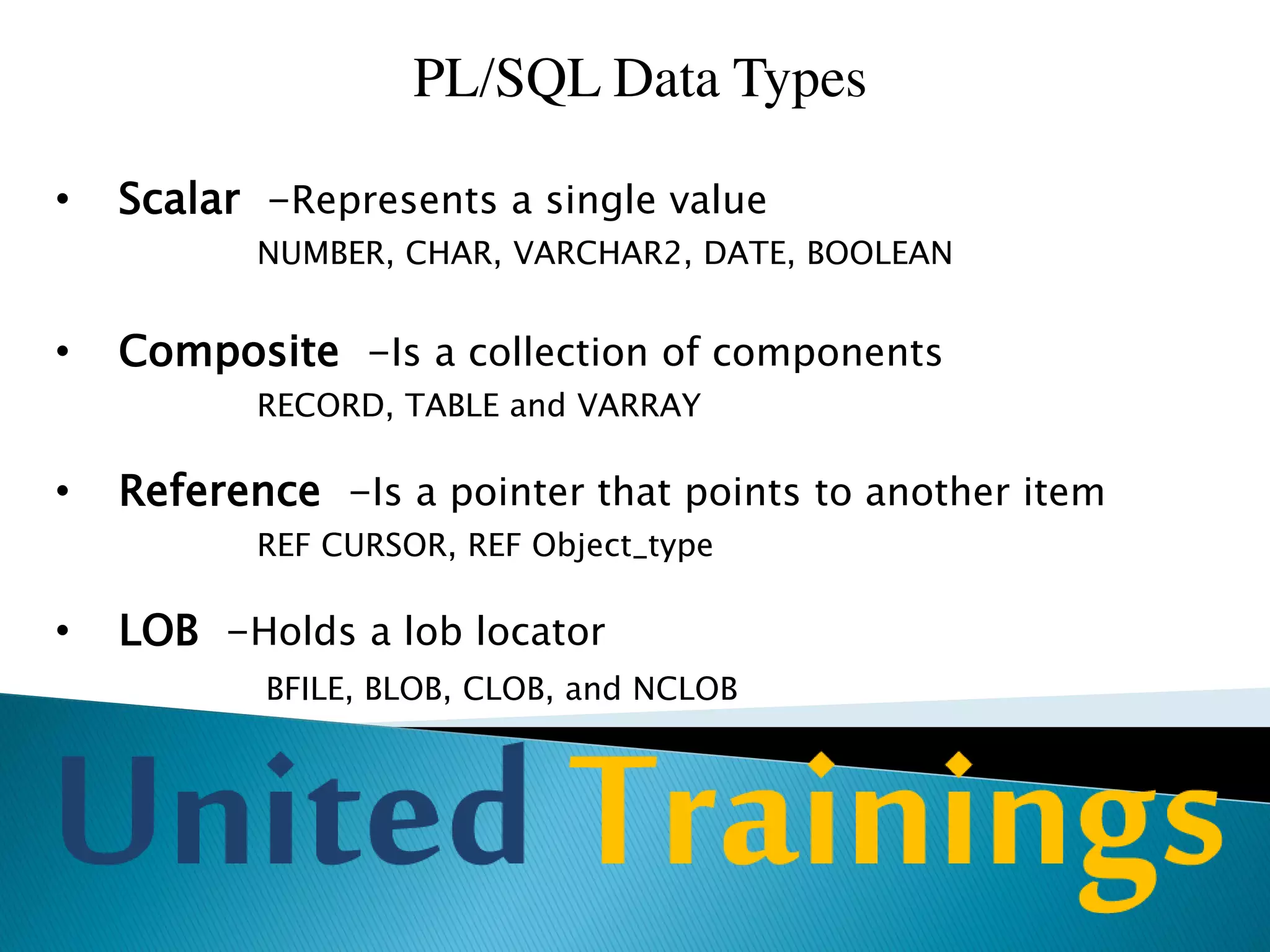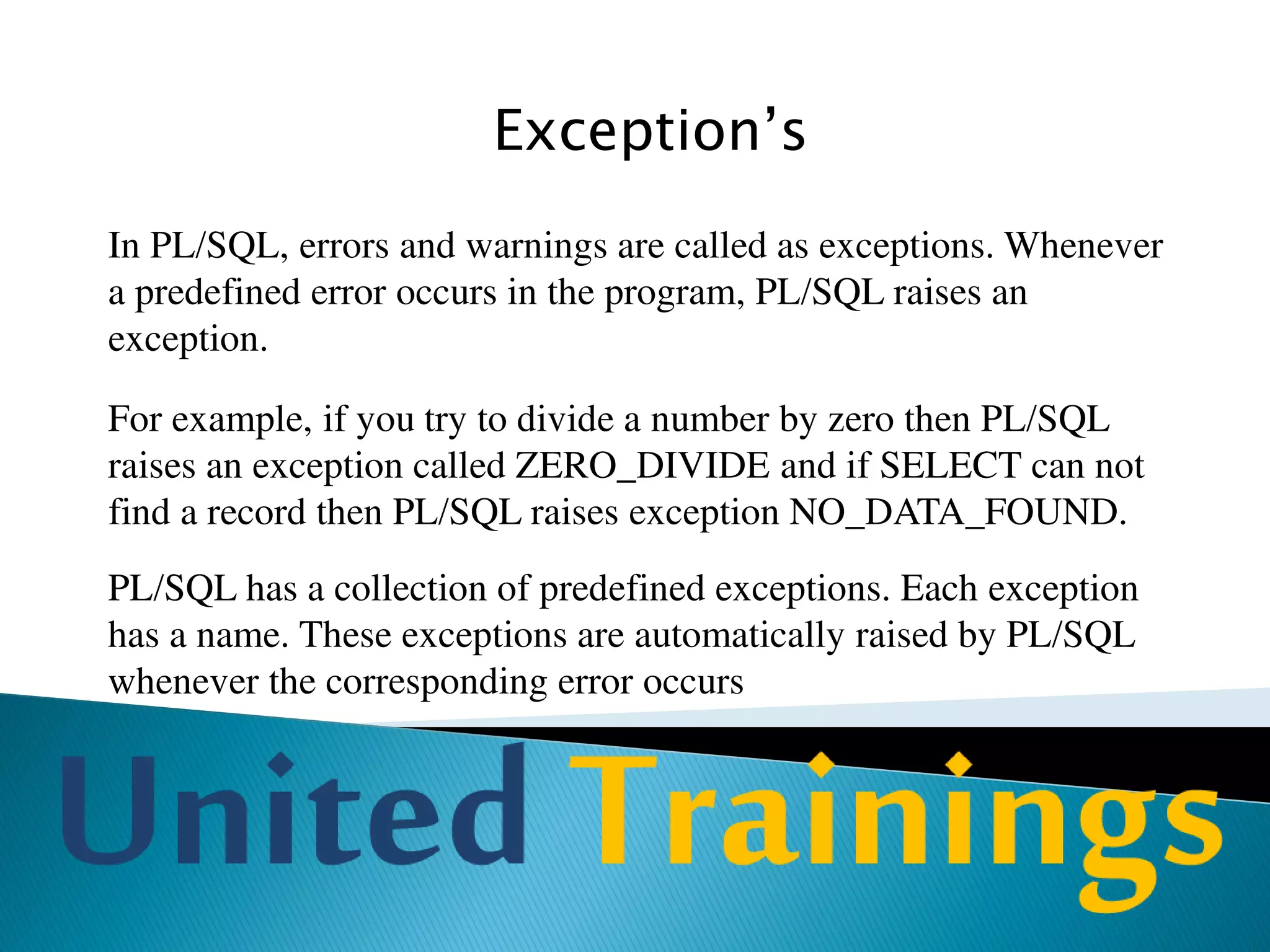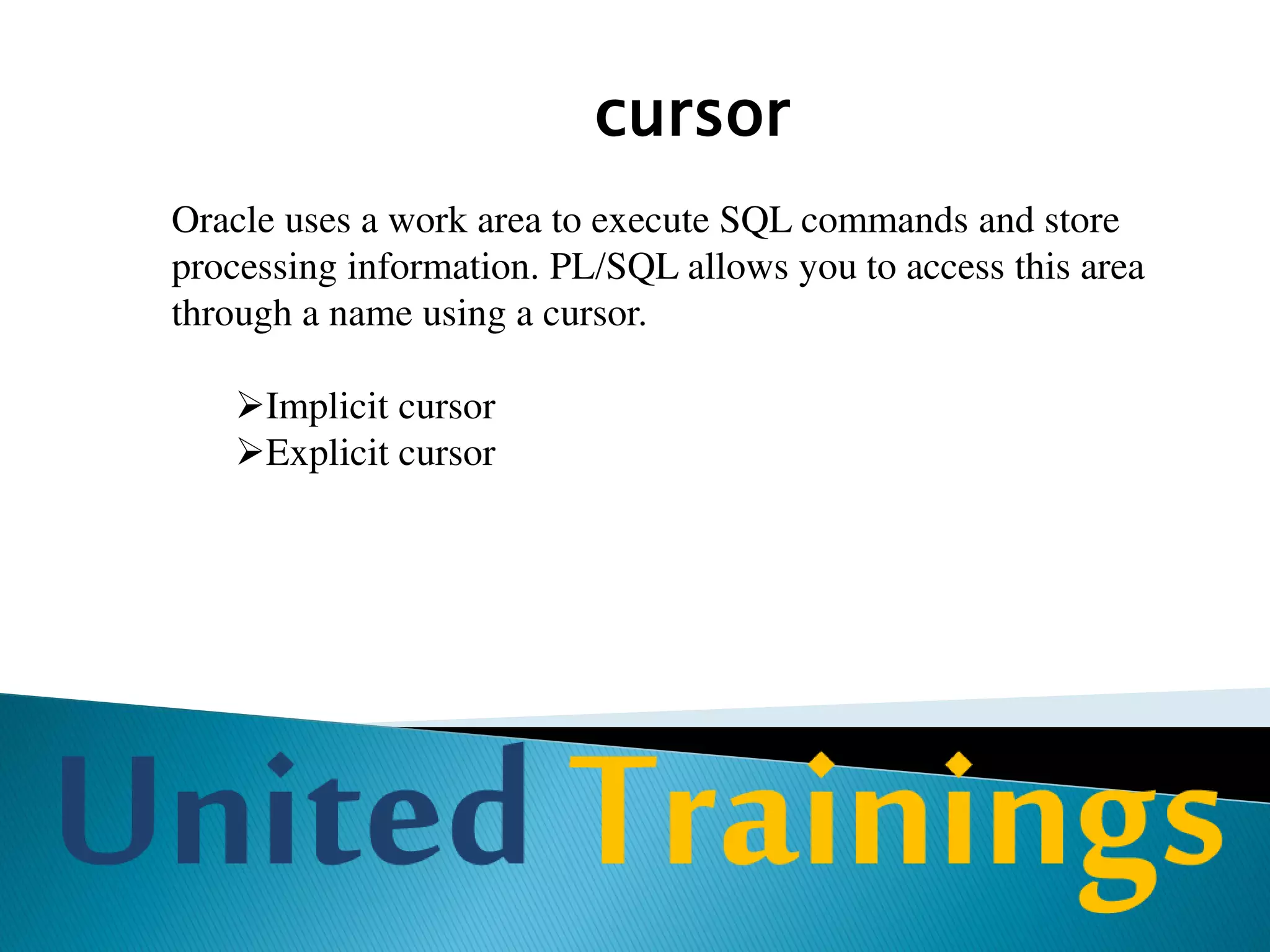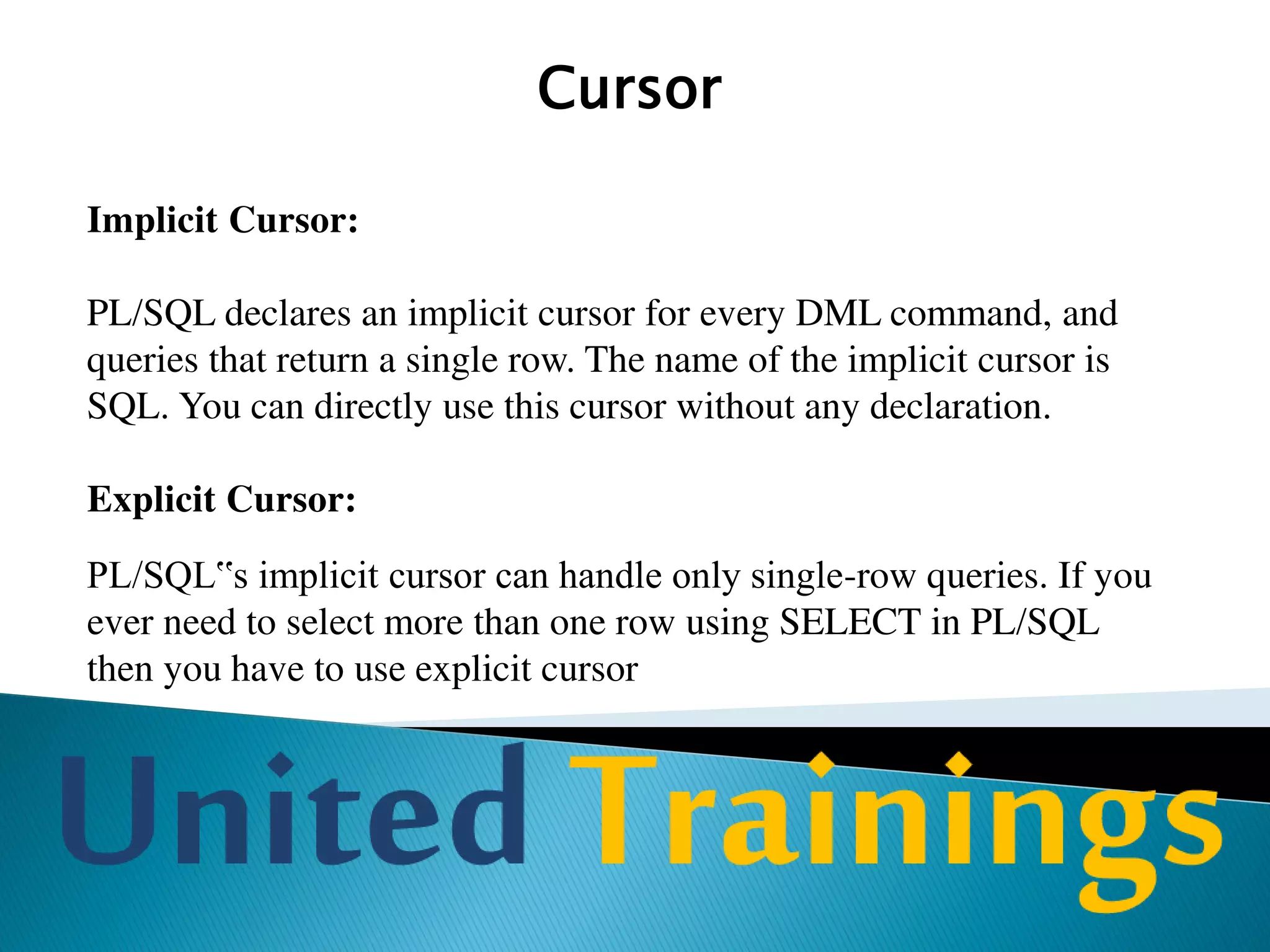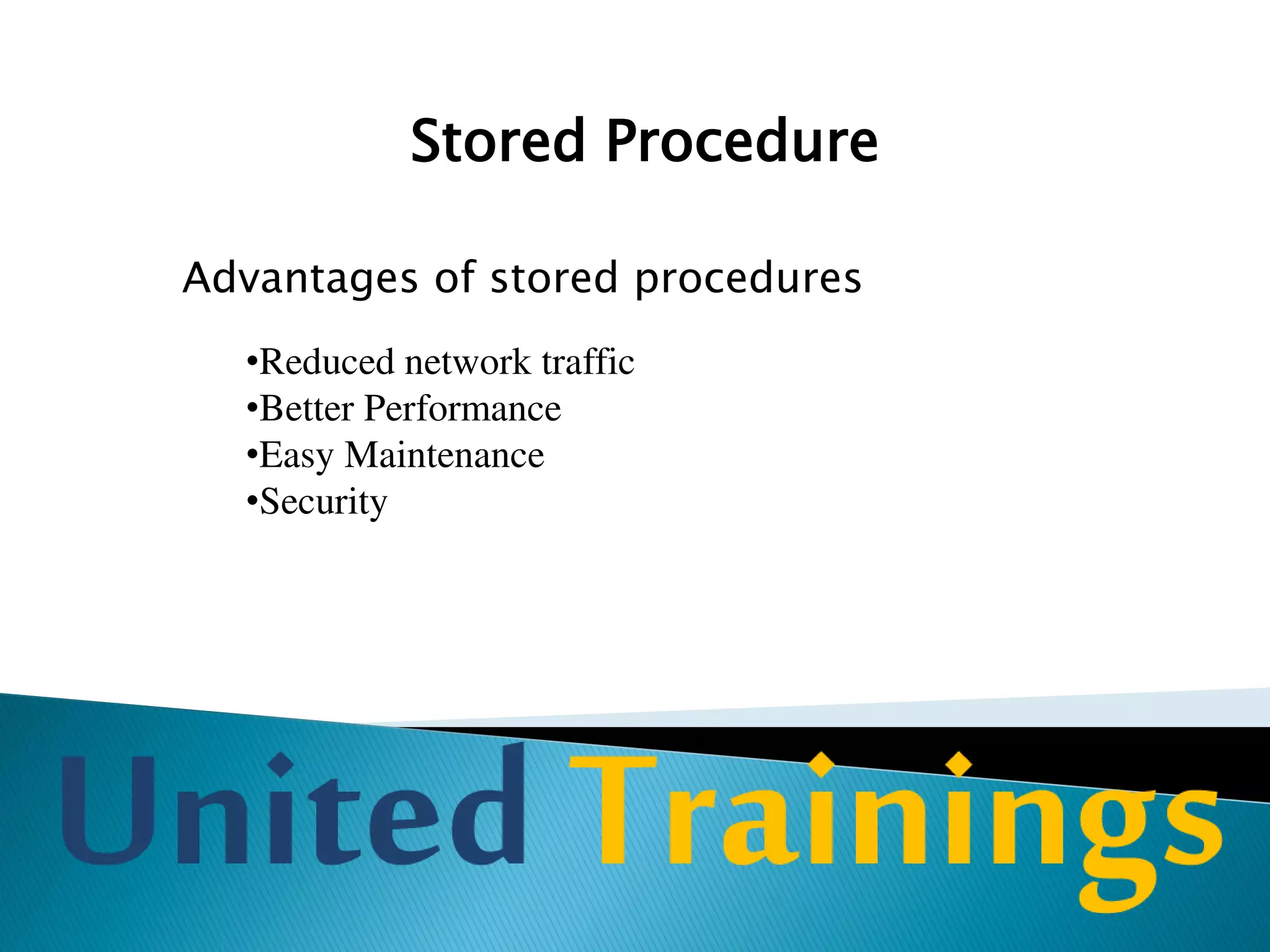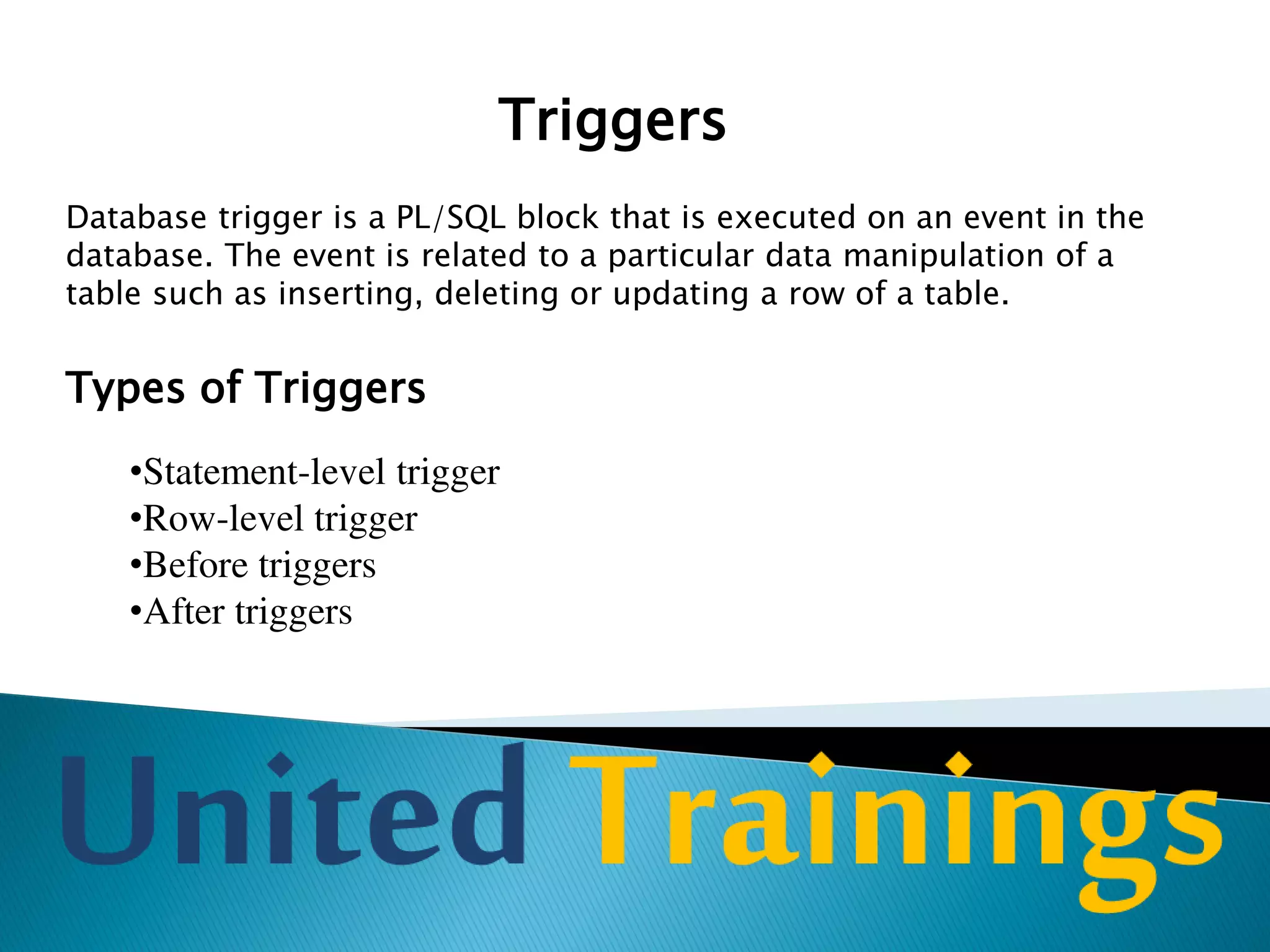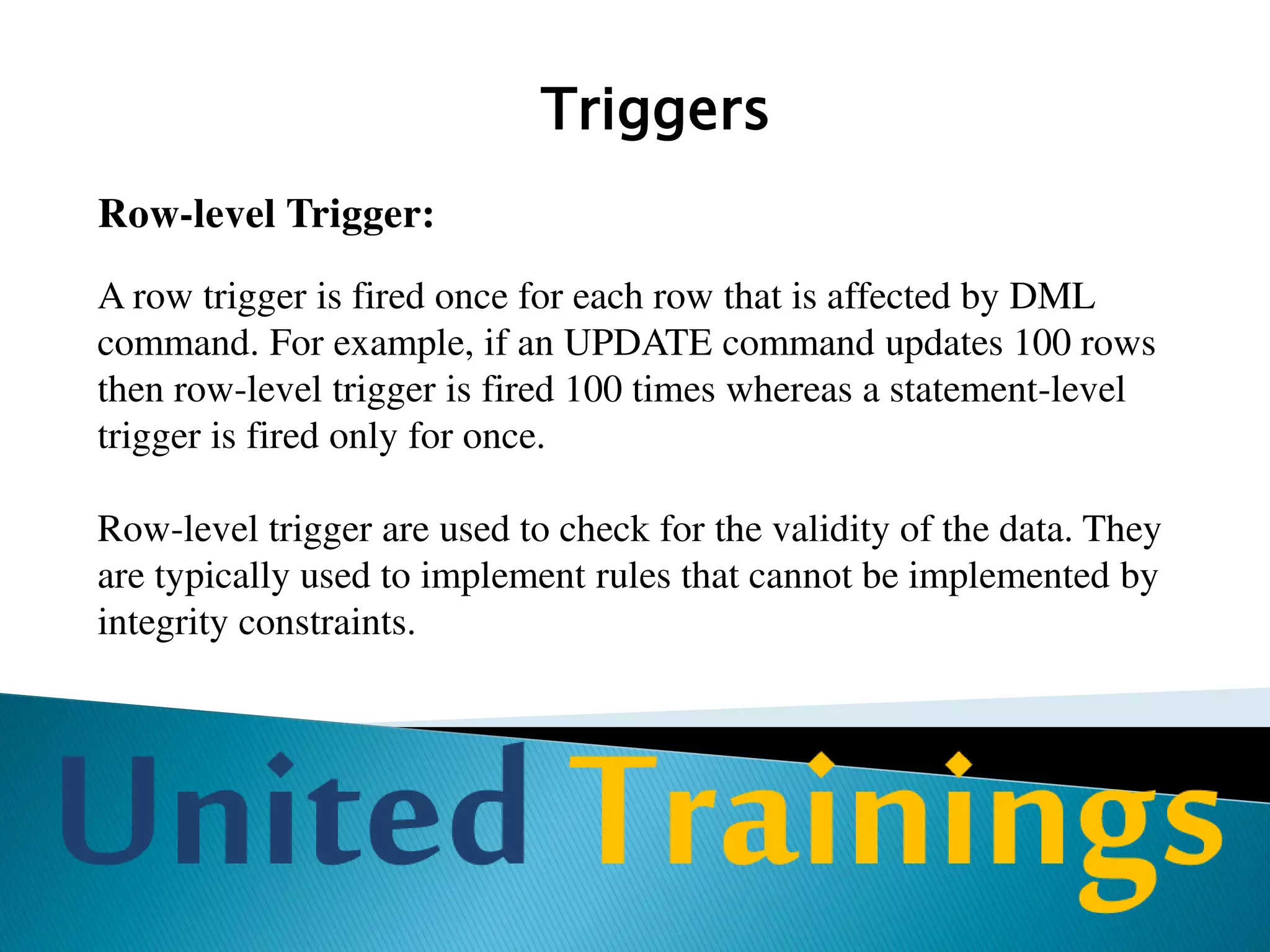PL/SQL is Oracle's procedural language extension to SQL that allows mixing of SQL statements and procedural logic like conditionals and loops. It uses SQL for data manipulation and its own control structures for processing. PL/SQL program units include anonymous blocks and stored procedures. Stored procedures are reusable blocks of code stored in the database under a name that can be executed. PL/SQL provides features like variables, control structures, exception handling, and modular programming with functions and procedures.

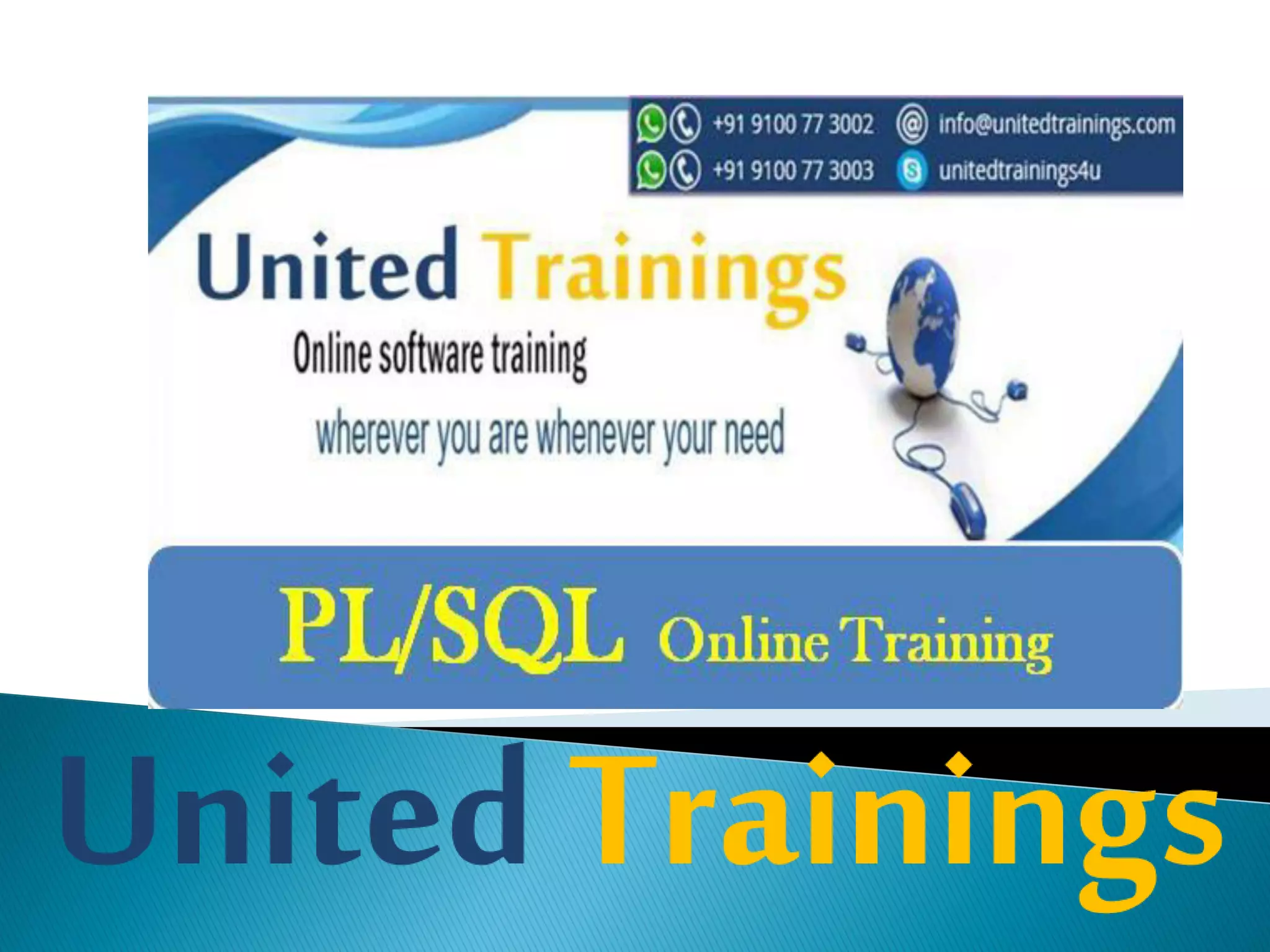
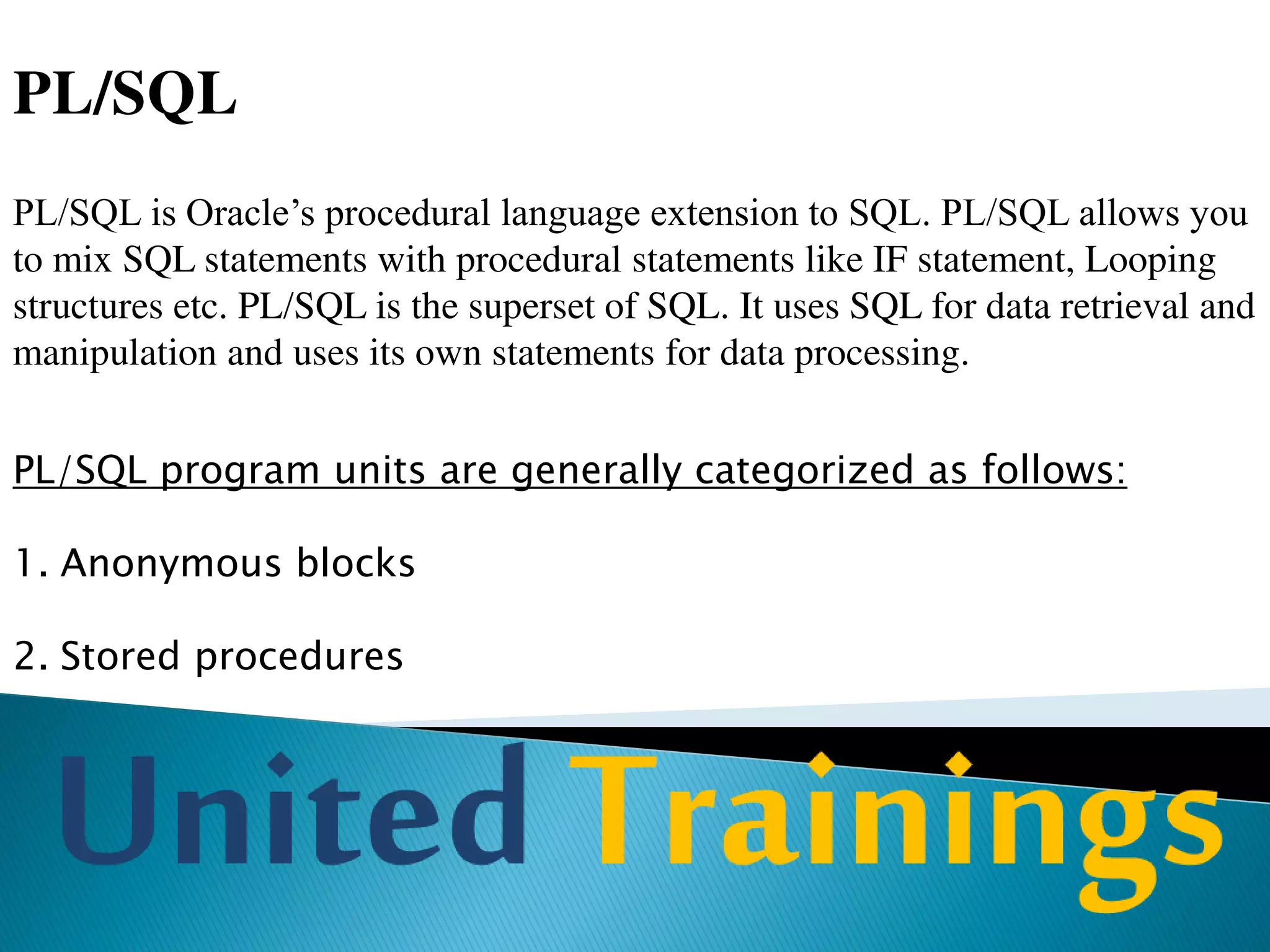

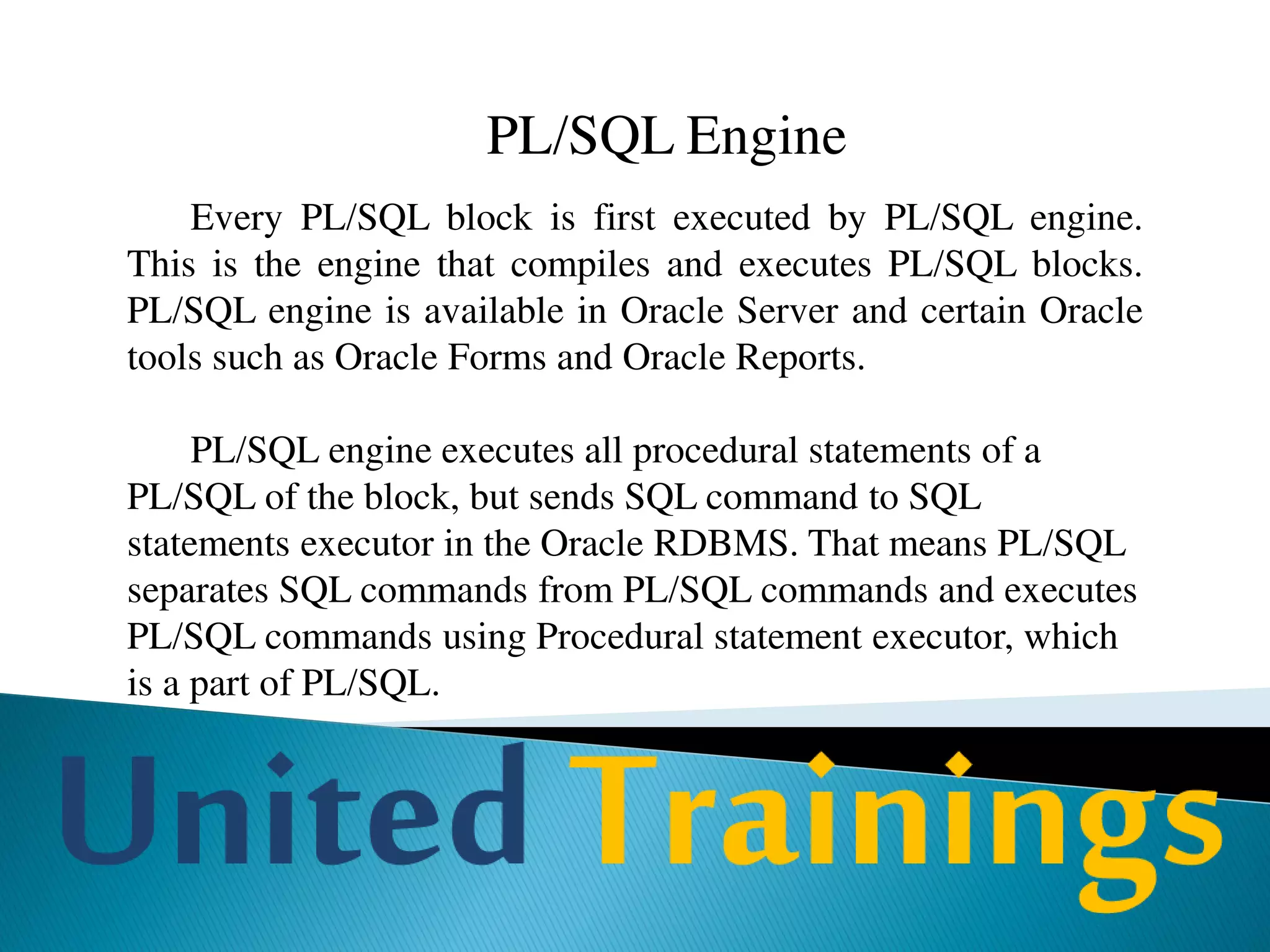
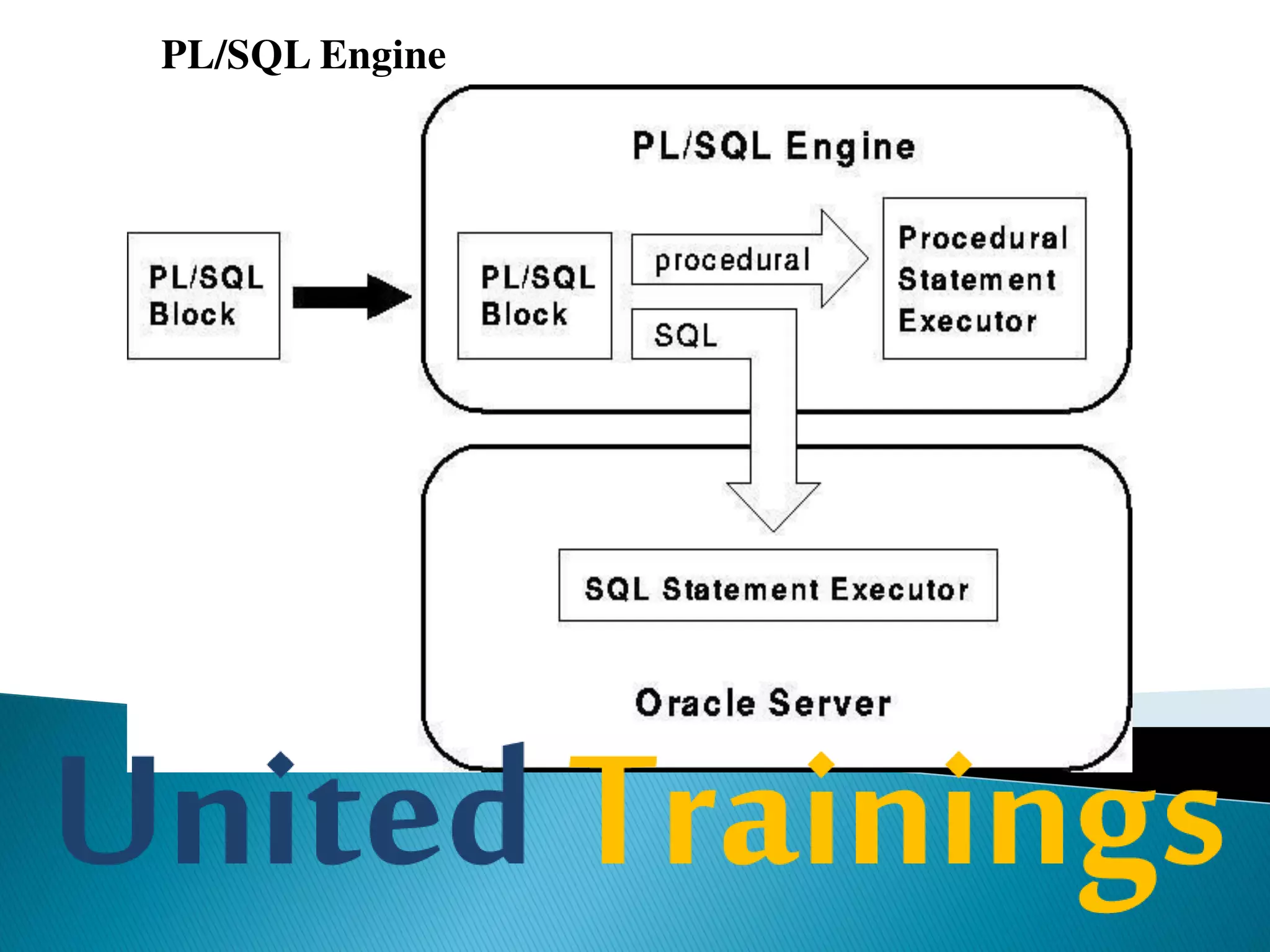
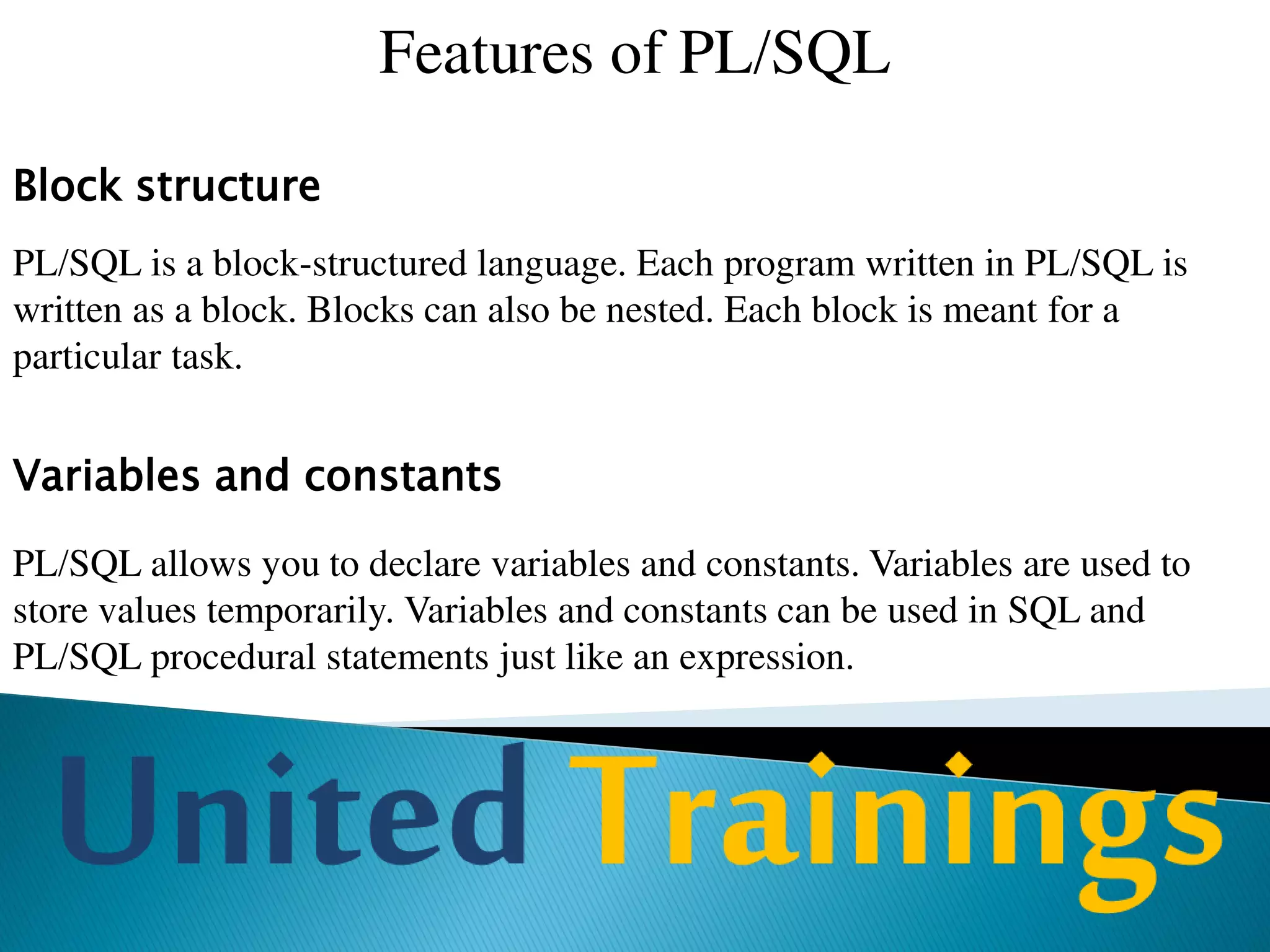
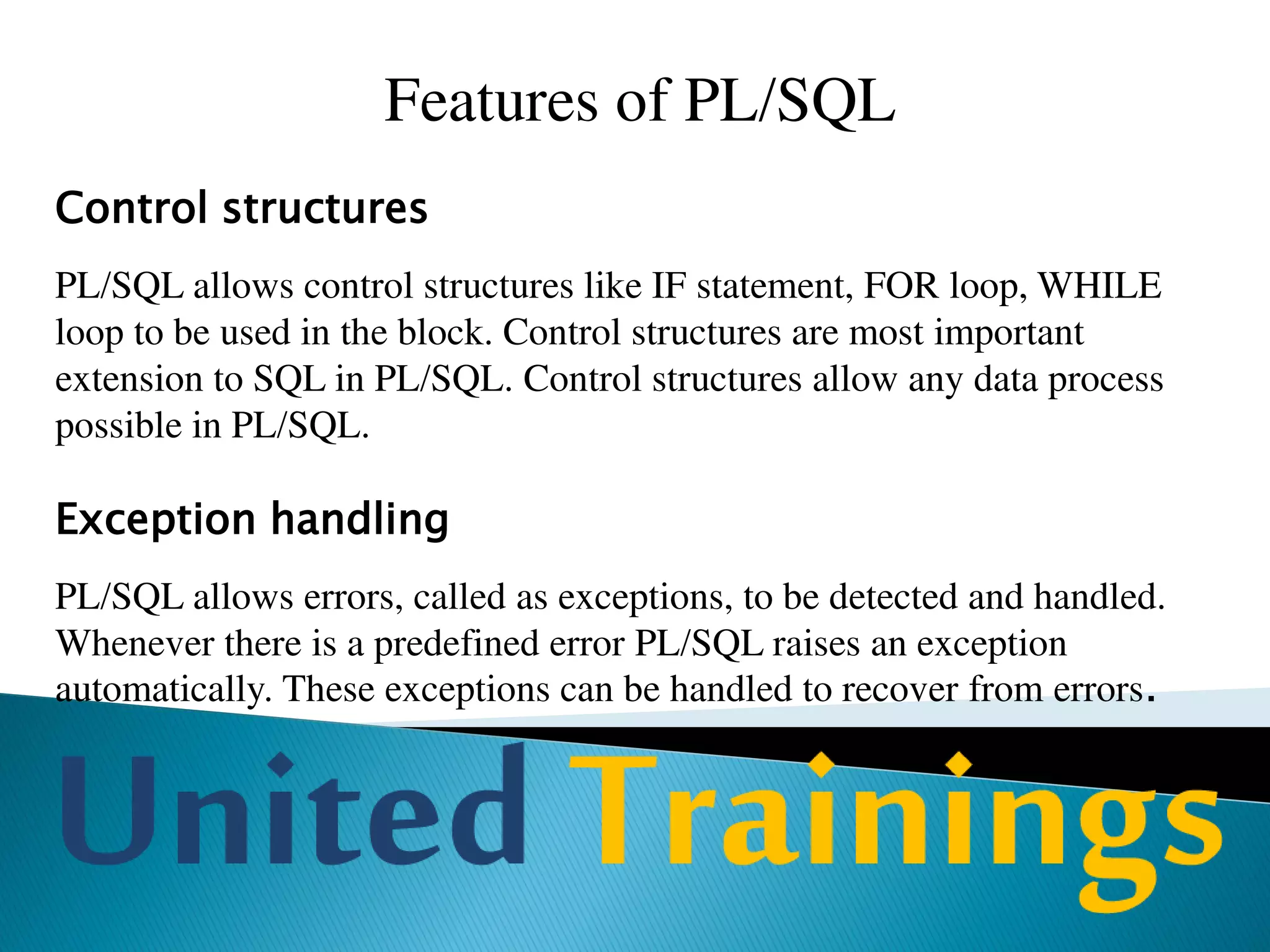
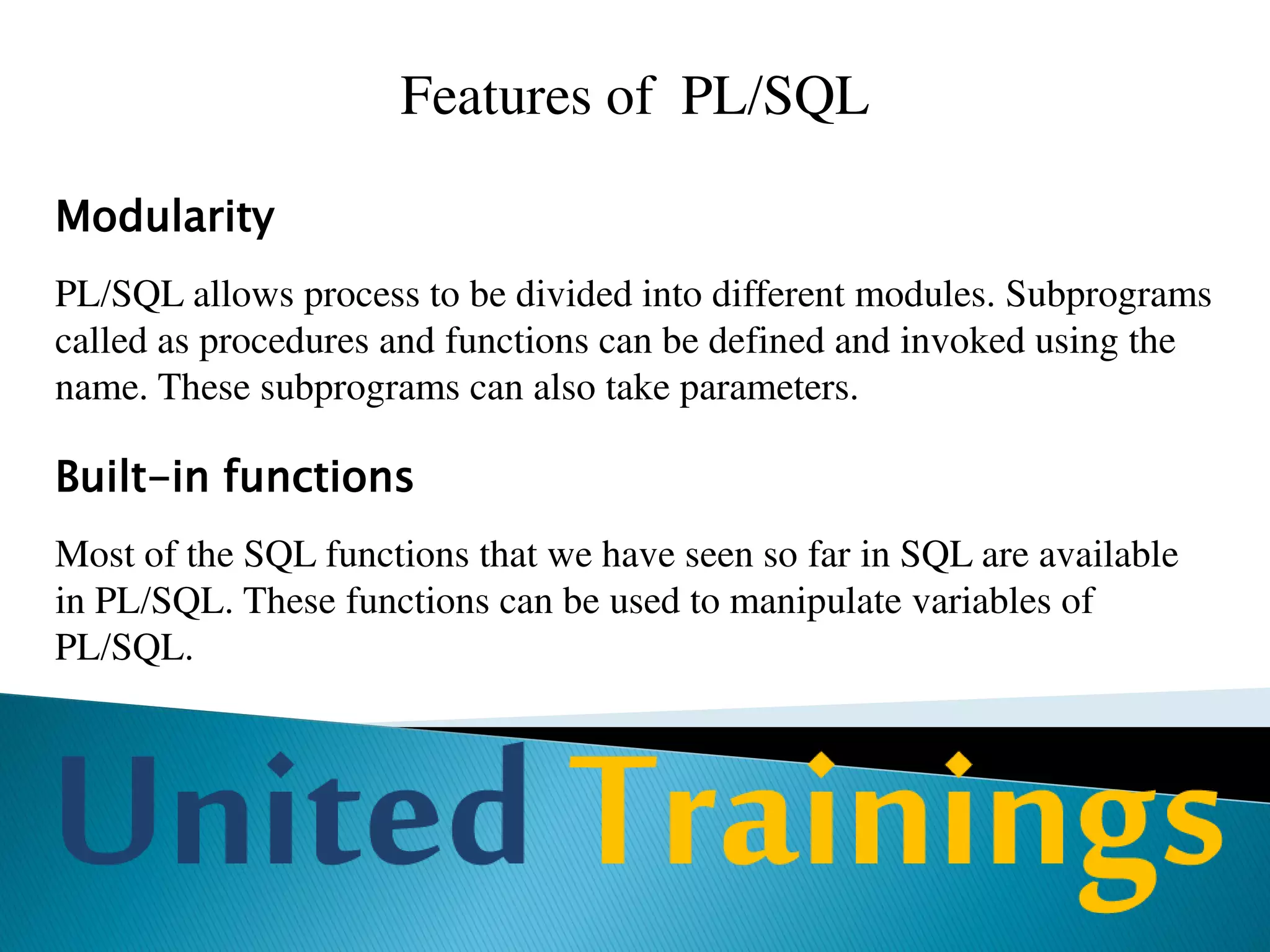

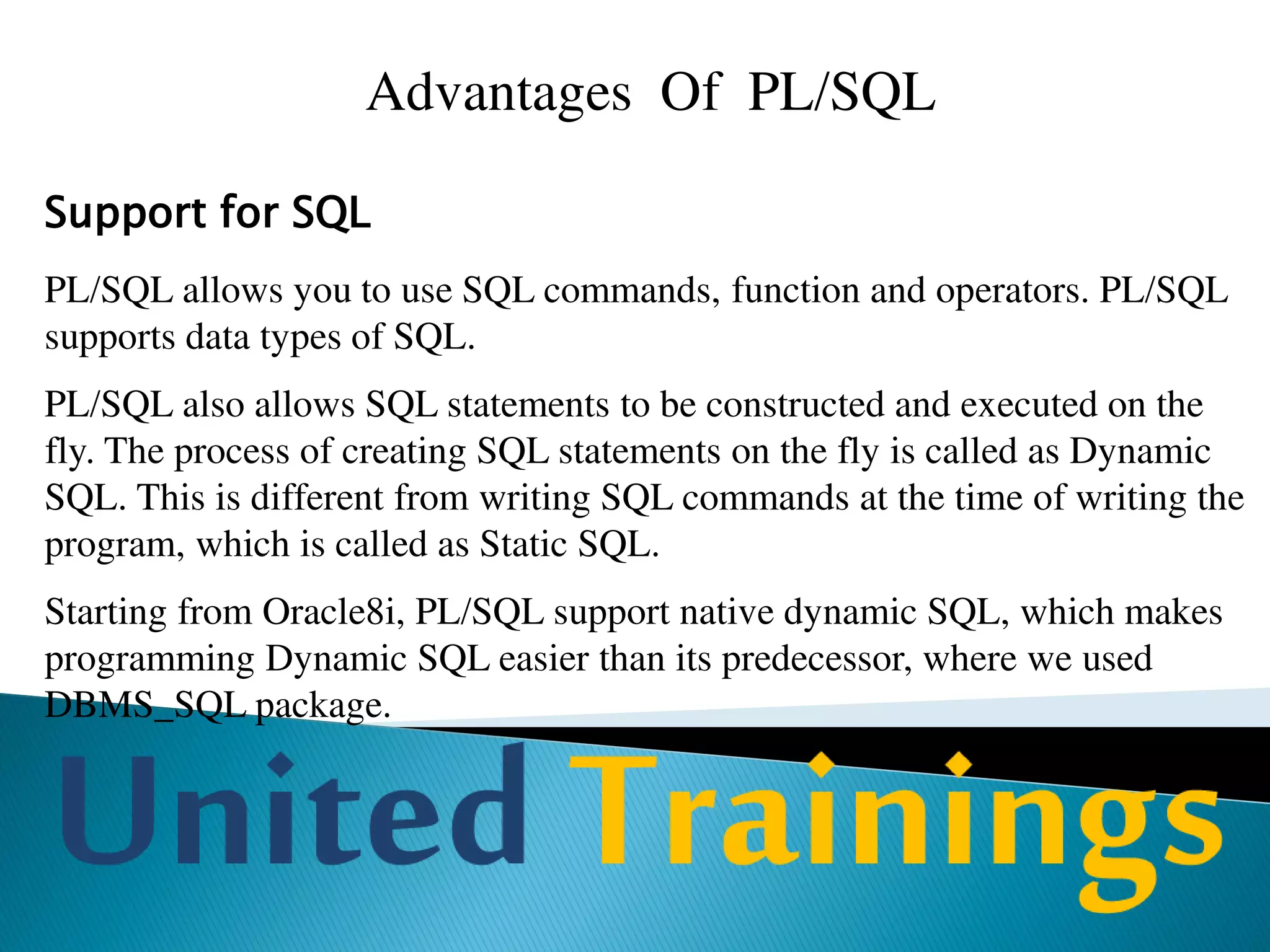
![PL/SQL block
Syntax of PL/SQL block:
[DECLARE
declaration of variable
declaration of cursor
declaration of exception ]
BEGIN
executable commands [EXCEPTION exception handlers]
END;](https://image.slidesharecdn.com/saphanaadminonlinetraining-130514130350-phpapp01/75/Oracle-PL-SQL-online-training-PL-SQL-online-Training-12-2048.jpg)
